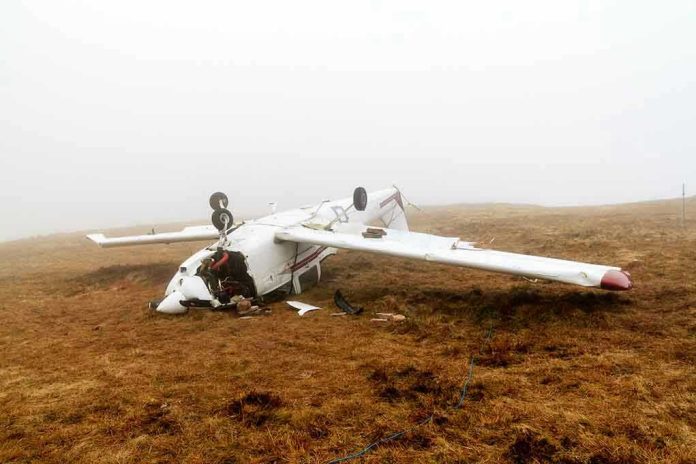🔴 Website 👉 https://u-s-news.com/
Telegram 👉 https://t.me/usnewscom_channel
A small plane’s emergency landing on a San Diego freeway captures national attention, highlighting concerns over air safety and traffic management.
Story Highlights
- A Cessna T206H made an emergency landing on Interstate 15 during rush hour.
- No injuries or damage were reported, an unusual outcome in such scenarios.
- Traffic was significantly disrupted as authorities worked to clear the scene.
- The incident underscores potential gaps in urban flight path regulations.
Emergency Landing on Interstate 15: A Closer Look
On a typical San Diego afternoon, a single-engine Cessna T206H took off from Montgomery Gibbs Airport. However, what began as a routine flight turned into an emergency situation when the pilot experienced unspecified difficulties. At approximately 4:45 PM, amidst the hustle of rush hour traffic, the aircraft made a dramatic landing on the northbound lanes of Interstate 15 near Aero Drive. The pilot’s decision to use the freeway’s median as an impromptu runway was captured on video by a passing motorist, quickly going viral.
The emergency landing, while rare, is not unprecedented. Such incidents generally arise from mechanical failure, fuel exhaustion, or engine power loss, prompting pilots to make split-second decisions to avert disaster. The broad median of Interstate 15, with its notorious congestion during peak traffic, became a critical factor in the pilot’s decision, allowing for a relatively safe landing without any injuries or visible damage.
Authorities and Public Safety Response
The California Highway Patrol (CHP) and San Diego Fire and Rescue quickly responded, issuing a SigAlert to manage traffic and ensure public safety. Despite the significant traffic delays, the absence of injuries or a crash-related fire was a relief to commuters and emergency responders alike. The Federal Aviation Administration (FAA) is expected to investigate the incident to ascertain the cause and assess any regulatory breaches.
The swift action by emergency services emphasizes the importance of coordinated response protocols during such unexpected events. The incident has sparked discussions on the adequacy of current emergency procedures and the need for potentially stricter urban flight regulations to prevent similar occurrences.
Implications and Future Considerations
In the aftermath of the emergency landing, several implications have emerged. Short-term, the event caused major traffic disruptions, affecting thousands of commuters. Long-term, it may lead to FAA investigations and a possible review of emergency response protocols and pilot training. Aviation experts underscore the rarity of such successful emergency landings without injury, attributing it to the pilot’s skill and quick decision-making.
As the aviation community faces increased scrutiny, there are calls for reviewing flight paths over populated areas to enhance safety. This incident highlights the delicate balance between urban development and aviation safety, prompting discussions on potential policy changes to better protect citizens and commuters alike.
Sources:

